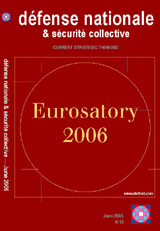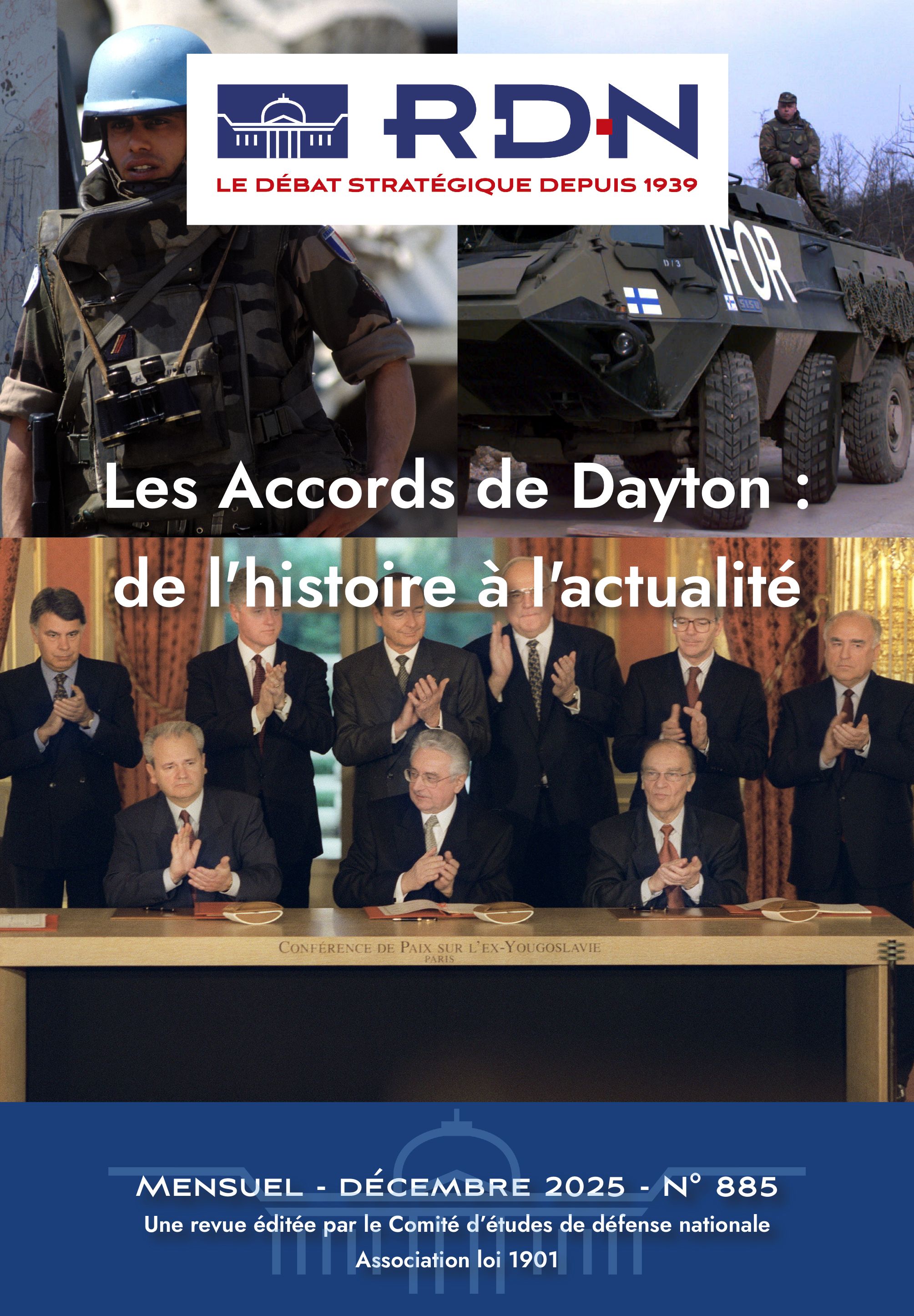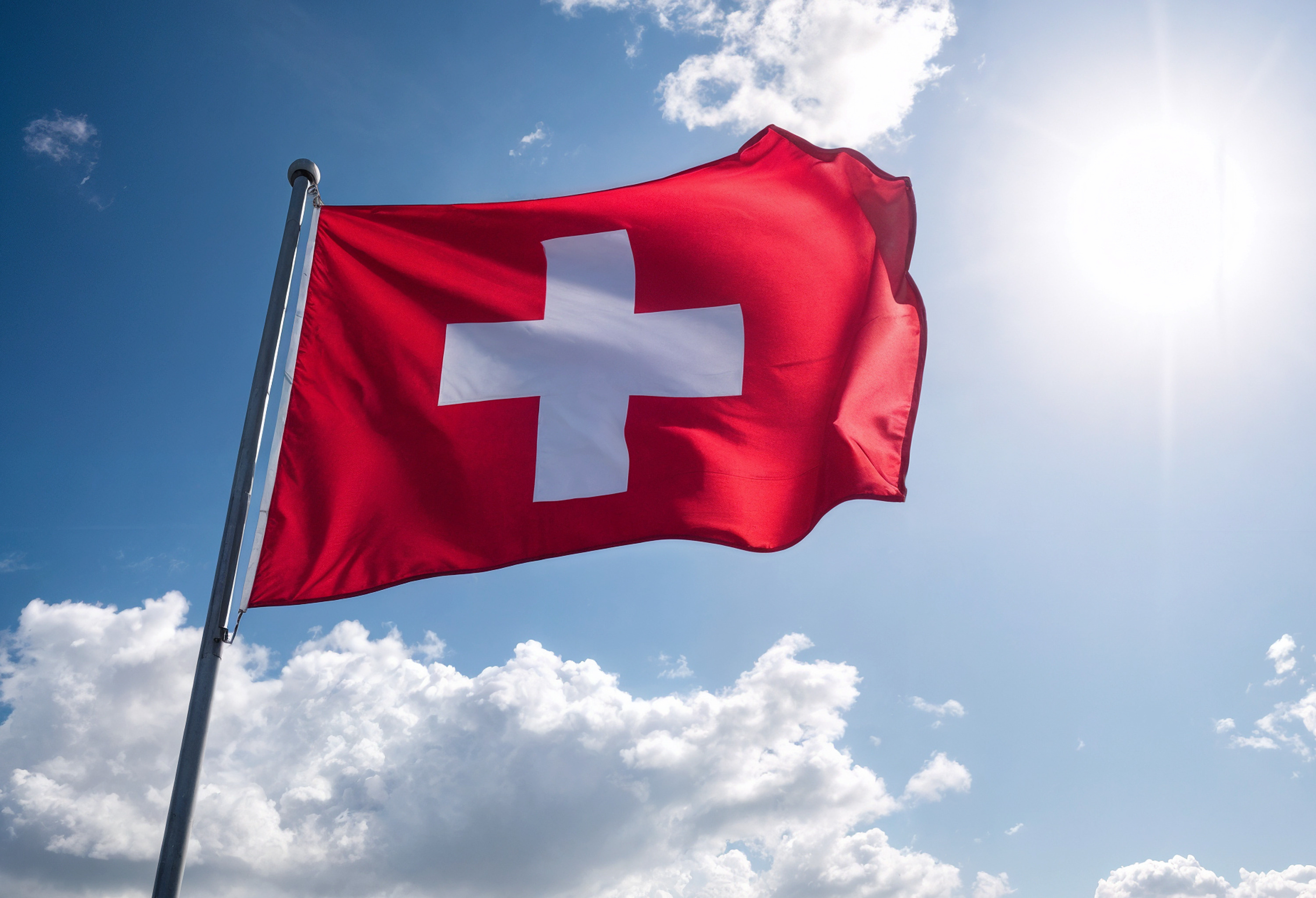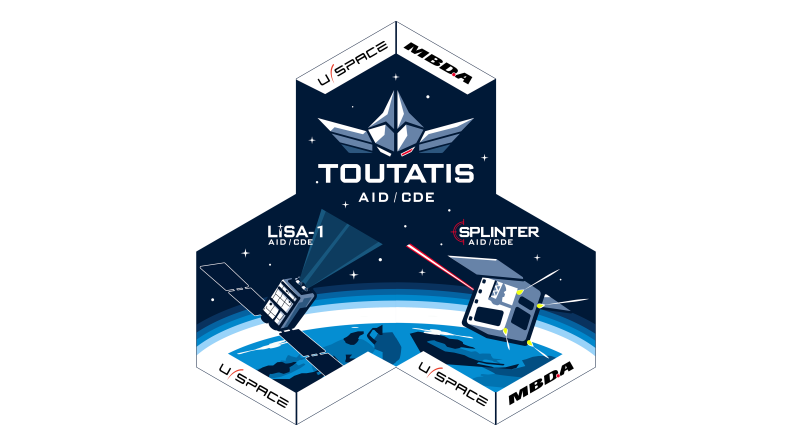Edition anglaise

June 2006 - n° 687
Tomorrow's land forces - Bernard Thorette
Confronted with new types of conflicts, France will be unable to withdraw into itself but will have to remain in contact with a turbulent world. This certainty is the yardstick by which tomorrow’s land forces will have to be structured. They will have to be able to sustain, over a long period, standing operational commitments while retaining the capability of undertaking decisive intervention operations, and of participating in the construction of the European defence identity.
Land armaments: higher priority needed - Michel Rondeau
After a brief description of the GICAT group, its chief representative describes the tasks of land forces today, which are always at the heart of crisis- prevention and crisis-resolution operations but are over-employed and relatively under-funded. Michel Rondeau goes on to review the land armaments industry, in particular the major role of the ‘Anglo-Saxon’ world. Finally, he suggests five areas in which Europe should play a role.
Armoured fighting vehicles: the core of future land forces - Luc Beaussant
Armoured Fighting Vehicles (AFVs) will remain a fundamental element of transformed land forces in the 2025 time period; the cost of their acquisition and possession will be under control, and they will be easier to project. Future AFVs will come into service post-2020 to replace the current inventory; the latter are globally satisfactory and will remain in service for about 15 years, but the penalty for the medium capability range is that they will need costly renovation programmes.
The arguments for a European tactical UAV - Jean-François Coutris
Despite the wide range of operations undertaken by the European Union, its member states’ armies still have a common requirement: a means to gather intelligence that allows each to preserve its independence of evaluation, at least as far as self-protection is concerned. Because of their flexibility, performance and in-flight security, tactical UAVs have become an essential tool. Read more
Will there be a war of the robots? - Pascal Soreau, François Useo
Attempting to give an overview of what robotics can do in present-day conflicts and not in future combat, explaining the technological difficulties to be overcome and examining the question of autonomous decision-making by robots, this article will concentrate on robotic systems operating in the air-land environment, that is to say on the ground or very close to it. It therefore excludes marine robots and unmanned aerial vehicles which need to be coordinated in use with other flying machines.
If it's not war, it's simulation - Emmanuel Chiva, Frédéric Morinière
Today’s computer simulation models terrain and friendly and enemy units, and provides for operational preparation of forces. Such simulation has long been well designed for conventional combat in open areas, but now has to face up to an additional and pressing necessity to prepare units to confront not only increasingly complex situations in populated areas but also an unconventional enemy. This article looks at new behavioural simulation systems and describes how technology attempts to respond to this challenge whilst still serving man.
Maintenance in operational condition: a confirmed and shared process - Jean-Bernard Bouillet, Hervé Achon (d'), Didier Hénaut
Land equipment maintenance is evolving rapidly. It now has to be able to respond to the increase in operations and rising costs while improving the support it gives to the armed forces. To that end two major changes were made by the Army in 2005. The first is aimed at improving support to the forces by being closer to them and reacting more effectively, through a major reorganisation of the equipment service of the Army, which is in hand. The aim of the second is to make the industrial side of maintenance more effective by gradually implementing new supply policies worked out by the DGA (the French armaments agency) together with its public and private partners.
In-service support for the Tigre helicopter: an example of cooperation - François Charles
At a time when maintenance procedures are undergoing major reforms, those for the Tigre combat helicopter are demonstrating the gains that can be achieved through the rationalisation, interoperability and cost control of equipment support, and especially that produced by several nations. This exercise casts new light on the concept of support as a prime element in the life cycle of an item of equipment that has all too often been neglected. It also offers a new opportunity to reaffirm OCCAR as a positive contributor to a new European dynamic, combining joint and a multinational approaches, which offers benefits both overall and for the client.
Non-lethal weapons in land forces' doctrine and operations - Georges-Henri Bricet des Vallons
Since their first appearance in the debate on doctrine in France, non-lethal weapons have raised much controversy, often far-fetched, with some rejecting the concept as a science fiction fantasy and others seeing it as a revolutionary parallel path to the use of classical forces. Pointing out the absence of strategic thought on non-lethal weapons, the author examines the modifications in doctrine that such weapons imply, emphasising the tactical potential offered by these new-generation weapons systems.
A defence of France's strategic chemicals industry - Édouard Braine, Dominique Fouché
Groupe SNPE was created in 1971 by converting the French State's ‘gunpowder’ departments into a public limited company. Its core business is the chemistry of energetic materials, including propellants, explosives and pyrotechnic devices. France is one of the few countries mastering solid propulsion for strategic missiles and launch vehicles, a capacity based on an unrivalled culture of safety and the scientific capabilities consolidated at the Le Bouchet Research Centre. The company's balanced portfolio of civil/military business (cuts in military spending in the 1990s were offset by civil markets such as automotive safety and fine chemicals) was imperilled by the sudden explosion on 21 September 2001 of the AZF plant in Toulouse, and the ensuing ban on phosgene production. The future of the French strategic chemicals industry, essential for national independence and the European project, will depend on restructurings and consolidation within France and Europe. At this critical juncture in a long shared history, the strategic chemicals industry and national defence must continue to ‘sail in company’.
The land armaments industry-an international economic issue - Christian Schmidt
This article attempts to situate recent developments in the land armaments industry in France in the international economic context and highlight the main consequences. The progress made by the British group BAE Systems clearly changes the landscape, previously dominated by US companies in Europe, with the emergence of a duopoly at the top, General Dynamics and BAE Systems, whose partly misleading appearance is shown. But these developments above all lead to a questioning of a certain idea of land armaments in Europe that should be taken into account, and an effort is needed to improve economic performance in this sector in France.
Reactive adaptation, the only answer to operational uncertainty - Marwan Lahoud
It is commonly said that asymmetrical conflicts have become the norm worldwide, and that the threat is impossible to assess and thus anticipate. As a result it has become increasingly difficult to programme solutions at system and equipment level. Such an analysis has to be balanced, and one has to avoid thinking or allowing it to be thought that industry is unable to respond to the operational uncertainty. On the contrary, thanks to its mastery of technology, industry is in a better position today to propose a ‘reactive adaptation’ to face any evolution of the threat.
Future medium armoured fighting vehicles - Philippe Hervé
In Europe it has been the French Army that has probably had the greatest experience in operating medium armoured vehicles (AFVs). The range currently in service is being renovated. The time has now arrived for us to ask ourselves the question ‘What happens when they are withdrawn from service?’, and above all to decide what needs to be done in the immediate future.
Teamwork at the heart of the contact battle - Charles Maisonneuve
The author notes that light armoured vehicles have a promising future in contact battles, which are always in the news. The vehicle commander will always be the one to make the right decisions in combat, but to do so he will need a vehicle suited to today’s requirements, something that Panhard strives to produce.
Defence and security: what are the stakes for European industry? - François Gayet
For fifteen years the geopolitical context has been constantly evolving, and the Europeans’ determination jointly to procure the means to assure their security and defence has become increasingly apparent. At the same time, European industry has seen a broad move to consolidate in the field of aerospace and electronics. Numerous obstacles still stand in the way of the development of the Defence Technological and Industrial Base, however. That is why the AeroSpace and Defence Industries Association of Europe is backing several European defence R&T projects: a strategic research agenda, more cooperative projects, the creation of technological centres of excellence and a technology ‘incubator’. Moreover, the setting up of a true European defence market is necessary to guarantee European industry’s competitiveness. And the emergence of a security market is now a real possibility, given the increasingly important place occupied by technologies in both the security and defence domains.
The EU Military Staff - Jean-Paul Perruche
The EU Military Staff, the European Union's permanent single integrated military structure, is now in its fifth year. Small though it is, from the outset it has been at the heart of European Security and Defence Policy achievements. It brings its military expertise to the preparation of all documents to be used as the launch pad for operations. It is the executive structure in the process of developing capabilities and it is in constant contact with the main EU interlocutors in the security field throughout the world.
How to achieve a ‘paradigm shift’ in European defence? - Nick Witney
In this article Nick Witney, Chief Executive of the European Defence Agency (EDA), sets out the Agency’s objectives, ambitions and prospects. Operational for a year now, the EDA is destined to help modify profoundly European Security and Defence Policy through improved European military capabilities and R&D. Forward-looking, it is developing a long-term vision for the next 20 years. Read more
The NRF and NATO Transformation - Lance L. Smith
The NATO Response Force (NRF) is developing and the first exercise Steadfast Jaguar, will be held in June 2006 in the Cape Verde Islands. After a description of the NRF concept and structure, General Lance L. Smith, US Air Force, Supreme Allied Commander Transformation, shows that NATO Transformation and the NRF are progressing hand in hand, witness to the Alliance’s determination to preserve its relevance and essential role.
Britain's new Defence Industrial Strategy - Axel Stoeller-Raimbault
On 15 December last year, the United Kingdom published a white paper on British defence industrial strategy. The document marks a distinct change in ministerial procurement policy from open competition between suppliers to partnership in industrial sectors deemed to be of strategic importance. The implementation of this strategy should enable the ministry to support key British industrial capacities and also to secure long-term best value for money.








